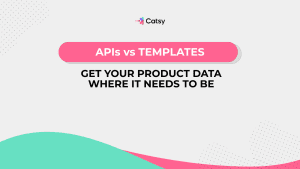What is DAM? Everything You Need to
Know About

- Digital asset management (DAM) is essential for businesses to create engaging and consistent content across various channels and platforms.
- DAM helps overcome the challenges of managing scattered assets by consolidating them within a unified system and enabling self-service access for teams regardless of their location.
- DAM plays a crucial role in organizing product content for various users, such as eCommerce managers, ensuring easy access, consistent representation, and enhancing the overall shopping experience for customers.
In this Article
We know Steve Jobs for many great things – in fact, you could be reading this text on a device designed and manufactured by the company he helped found. Speaking of designing, Jobs once said: ‘Design is not just what it looks like and feels like. Design is how it works.’ This wisdom applies not only to products but also to digital assets, which need to be designed and managed in a way that makes them easy to use and access. That being said, our question now is What is DAM or digital asset management?
Digital assets are essential for any business that wants to create engaging and consistent content across different channels and platforms. But anyone with experience managing assets understands the challenging process, especially when scattered across different devices, folders, and systems. DAM disappears these challenges and, most importantly, helps you optimize the use of your digital assets.
However, there is a problem if DAM is a new concept to you and you do not know how to put it to good use. But do not worry because this article will explain the technology and the key objectives it seeks to achieve, how DAM works, and deep dive into what the technology means in digital marketing.
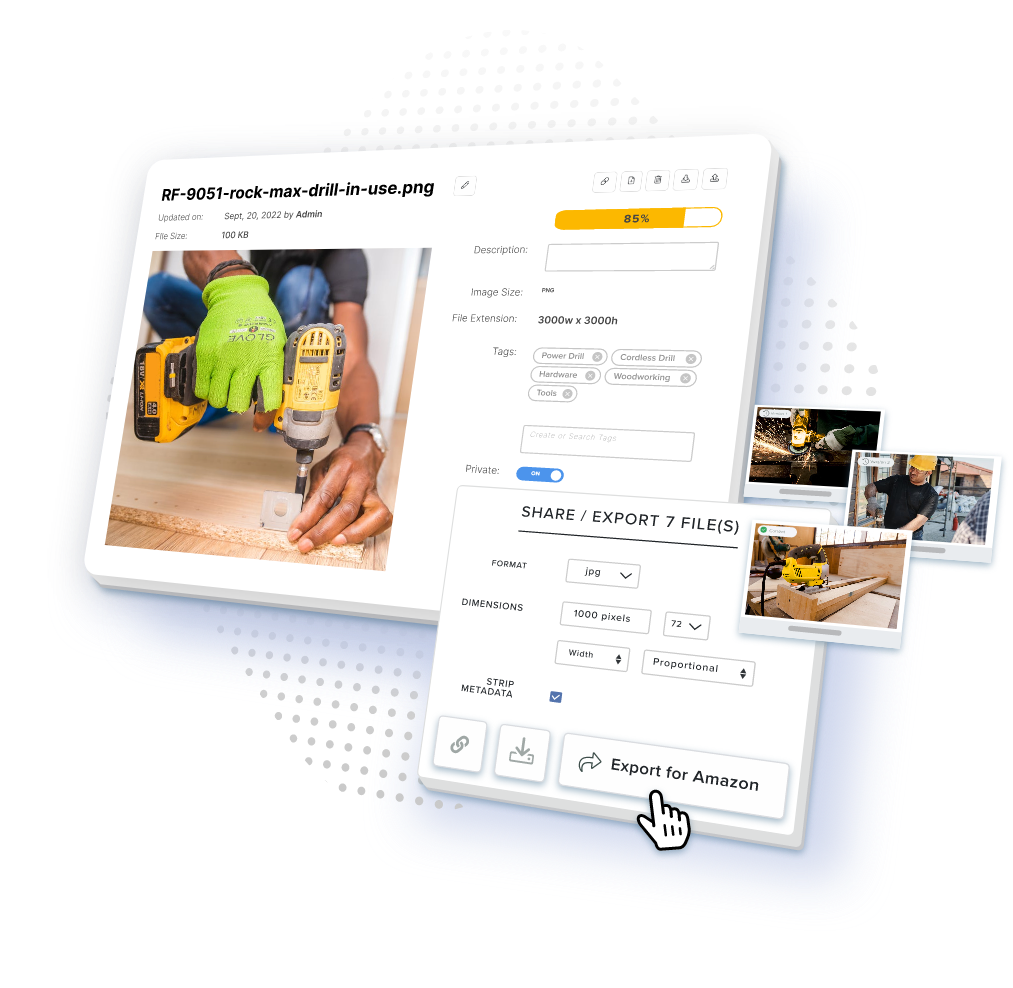
What is Digital Asset Management?
Digital Asset Management system (DAM) encompasses a set of practices and tools organizations employ to manage and share product content effectively. As a digital assets management strategy, DAM relies on specialized platforms with features like streamlined feedback loops, versatile search options, and metadata editors, which enhance efficiency and collaboration within the organization.
But wait, what exactly is a digital asset? It is product information stored in a digital format, including anything from presentation material (photos, audio clips, graphics, and videos) to fonts and documents. The content’s owner or licensee can use it for some benefit or purpose.
DAM as a process and tool became widely popular with the emergence of internet technology as a powerful tool that transformed the business environment. The internet brought digital marketing, which enabled businesses to reach and interact with existing and potential customers – but this channel required companies to generate digital content in copious amounts to achieve three primary goals:
1. Share information and feedback with their audiences
2. Showcase their brands
3. Showcase their product/service offerings online
With the growth of content volume came the need to store and manage vast libraries of marketing graphics, videos, and documents. So, DAM came in to create order where none was using several strategies, including:
- Consolidating all assets within a unified system
- Facilitating self-service access to all teams regardless of time zone and geographical location.
- Publishing validated and current assets
- Streamlining digital asset workflows related to product content through automation
- Leveraging the power of metadata to drive efficient processes
- Enabling users to transform and repurpose digital content effortlessly
- Allowing the users to track the effectiveness of product content by providing powerful analytics capabilities.
- Streamlining marketing workflows by seamlessly connecting business tools and data to gain greater control over brand consistency, strengthen security measures, and enhance productivity.
Besides bringing order and streamlining product content management and distribution processes, DAM solutions also help brands to sell emotions to customers. They help organizations to create and deliver engaging, personalized, and consistent experiences across different touchpoints and channels.

Types of Digital Asset Management Tools
Two organizations may use different types of DAM solutions depending on their needs. This is true because these different types of software cater to various aspects of digital asset management within organizations. Some common variations of DAM programs include:
Brand Management Platforms
These focus on organizing and maintaining brand-related assets, ensuring consistency and adherence to brand guidelines. The DAM tools facilitate centralizing brand assets storage and management. They provide capabilities for brand asset management, collaboration, and governance, enabling teams to manage and distribute brand assets while maintaining brand integrity efficiently.
Video Management Platforms
These DAM tools specifically cater to video asset management and distribution needs. Users enjoy functionalities for video storage, transcoding, metadata management, video editing, and video streaming. Most importantly, the software tools provide a unified storage location from which authorized personnel can manage and share video content. The biggest win from such capabilities is streamlined video production workflows and optimized video delivery across various platforms.
Marketing Resource Management (MRM)
MRM tools focus on streamlining marketing operations and workflows. They enable efficient planning, collaboration, and execution of marketing campaigns by providing features for project management, digital asset organization, marketing calendar management, budgeting, and resource allocation. Marketing teams are the biggest beneficiaries of these tools – they help them effectively manage digital assets, collaborate with stakeholders, track campaign progress, and optimize marketing resource utilization.
eCommerce Digital Assets Management
These DAM tools cater to the needs of online businesses and retailers. They enable efficient management and distribution of digital assets related to eCommerce operations, such as product descriptions and images, catalogs, promotional materials, pricing, and other assets crucial for online sales. eCommerce DAM tools often integrate with eCommerce platforms and powerful content management systems to ensure seamless asset delivery and enhance the online shopping experience.
Evidently, each DAM tool serves a specific purpose within the broader asset management spectrum. As such, organizations may choose to adopt one or multiple DAM tools based on their particular requirements and workflows.
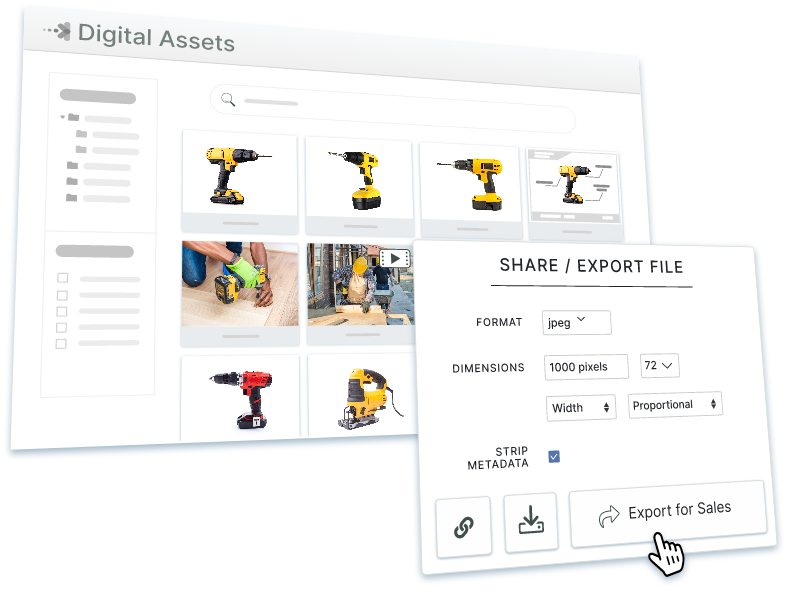
How Does DAM Solution Work
DAM provides users with a comprehensive set of tools and functionalities to manage digital assets efficiently. Here’s a brief overview of how DAM typically works in practice:
Uploading and Storage
The DAM dashboard allows users to upload digital assets to the platform’s remote storage. Most DAM tools, such as Catsy DAM, enable users to simply drag and drop assets when dealing with a few items. The solutions have a bulk uploading feature for larger jobs to expedite the process. The software ensures secure storage of the assets, organizing them for easy access and retrieval. And the fact that the product content warehousing is cloud-based makes it readily available to authorized users whenever and wherever they may be, regardless of the device used.
Tagging and Metadata
Another critical function for a DAM tool is to enrich product content – adding details that make content like images easily searchable across the product information management (PIM) system. To this end, the DAM tool allows users to assign relevant tags and metadata to assets, facilitating categorization and classification, often based on keywords. The labels and metadata make searching and filtering assets and related products easy.
Searching and Filtering
The DAM offers robust search capabilities, allowing users to find specific assets quickly. Users can search by keywords, tags, metadata, or other specified criteria. Advanced filtering options enable narrowing down search results based on asset attributes like digital file type, date, or usage rights.
Preview and Editing
Users can preview assets within the DAM platform without downloading them. This Top digital asset management feature allows for a quick visual assessment of the assets’ content and quality. Additionally, most DAM solutions, including Catsy DAM, provides basic editing capabilities directly within the platform, such as adding watermarks, resizing, or cropping.
Collaboration and Sharing
The best DAM facilitates collaboration among team members and external stakeholders. Users can share assets with specific individuals or groups, controlling access rights and permissions. Speaking of collaboration and sharing, some of the best digital asset management tool implement a brand portal feature, enabling the DAM system to handle many inbound requests (for digital assets or approval) with much less stress. Simply put, a brand portal is a self-service tool that helps organizations deploy assets to a select group of users. Brand portals increase the capabilities and utility of DAM platforms because they:
- Are always available
- Have powerful search mechanisms
- Enable product content partners to customize their experience with an organization’s DAM system.
- Group users based on profile
- Extend the single source of truth from the DAM system
- Provide additional DAM system functionalities, such as allowing users to review, provide feedback, and approve assets within the system.
Download and Distribution
Brand portals are also helpful here – they allow approved users (internal teams, agencies, creators, etc.) to easily download digital assets from the DAM, ensuring they can access the high-quality versions needed for their intended use. The software may provide options for selecting different file formats or sizes based on specific requirements. Assets can be distributed across various channels, such as social media platforms, websites, or integrated with other tools or systems.
Version Control and Asset History
Importantly, DAM typically allows users to manage different iterations of assets, helping track changes, revisions, and updates made to assets over time. On the other hand, asset history records all activities related to an asset, including edits, downloads, and sharing, enabling transparency and audit trails.
On the whole, DAM tools simplify end-to-end digital product content management, providing a centralized platform where users can efficiently upload, store, tag, search, preview, edit, share, and download their assets.

Who Uses Digital Asset Management Systems?
Just like DAM platforms exist for specific use cases, they benefit a diverse range of roles within and outside organizations. Some familiar users of DAM systems include:
Creators
Creators are the source of digital assets – designers create templates, photographers produce stunning and high-quality product images, and content creators write appealing product descriptions and metadata. This user type depends on DAM tools to store the assets, add details, edit, and share them. Notably, the assets are centrally managed, making it easy to retrieve files as needed.
Marketers
Marketers can easily access relevant campaign content if they have the proper permission. They also collaborate with creators, such as designers, to create brand guidelines, social media assets, logos, and other campaign materials. These assets are stored in shared storage, meaning other stakeholders can easily search and retrieve the assets for whatever reasons. The most significant benefit of this architecture of the DAM system is that all assets meet organizational standards, ensuring brand consistency and efficient collaboration.
eCommerce Managers
Most brands today participate in the eCommerce space to broaden their reach. They use digital content to showcase product offerings in a way that not only attracts as many eyeballs as possible but also converts them into customers. This task is typically the responsibility of eCommerce managers, who use DAM systems to consolidate product content into a single source of truth. They enable brands to enjoy better consistency throughout their multiple offline and online channels, mainly because there is no ambiguity about assets and their proper uses.
Agencies
Agencies handle the marketing aspect of brands, meaning their typical workflow management involves design, creative, and advertising operations. DAM tools are invaluable in these operations because they boost productivity by providing faster and better outcomes to clients. It helps to note that agencies may utilize the best DAM tools as external partners (they may have dedicated access to an enterprise digital asset management through brand portals) or may acquire their own platforms for in-house management of workflows and deadlines.
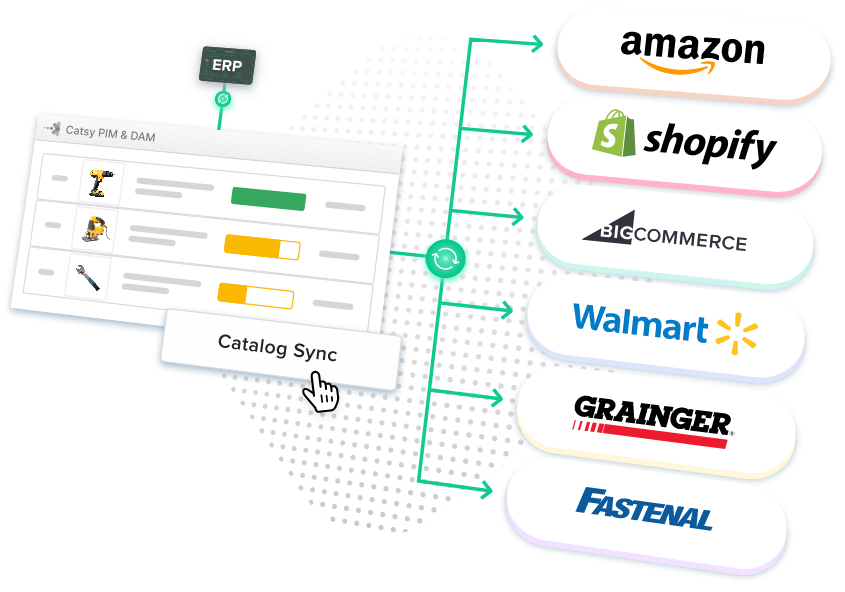
Why is DAM Solution Important
DAM tool plays a crucial role in achieving digital marketing success in the modern era. It helps organizations in the following ways:
Managing the Complexity and Diversity of Digital Assets
In today’s digital landscape, marketers deal with a vast array of digital assets across various digital channels and devices. DAM helps them cut through this complexity in several ways, including centralizing storage and organization of product content and enriching it to ensure easy categorization and findability.
Streamlining Content Creation and Distribution
We learned that most DAM systems provide self-service means for stakeholders to access and interact with the assets stored on the platform. Simply put, the feature enhances the capabilities of the DAM tool as a central hub where teams can access, review, and collaborate on product content. This effectively takes out manual processes throughout the lifecycle of product content, saving time and increasing content accuracy. The content creation cycle also receives a massive boost in terms of faster time-to-market from features like approval workflows, annotations, and version control.
Optimizing Content Performance and Quality
Most DAM tools, including Catsy DAM, have readiness reporting and usage tracking capabilities. This way, brands, and other product content partners can track the popularity of certain assets and how specific users interact with them. The resulting insights empower brands to optimize the quality of their product content.
Ensuring Data Security and Compliance
The usefulness of brand portals doesn’t stop at efficient content distribution. Instead, the feature allows brands to put a tight lead on accessibility, ensuring that only users with proper credentials can view and retrieve given assets. DAM also provides features for digital rights management, allowing brands to track usage rights and licenses associated with assets. These capabilities help organizations adhere to data privacy regulations, protect intellectual property, and maintain brand reputation.
Key Benefits of Digital Asset Management Solution
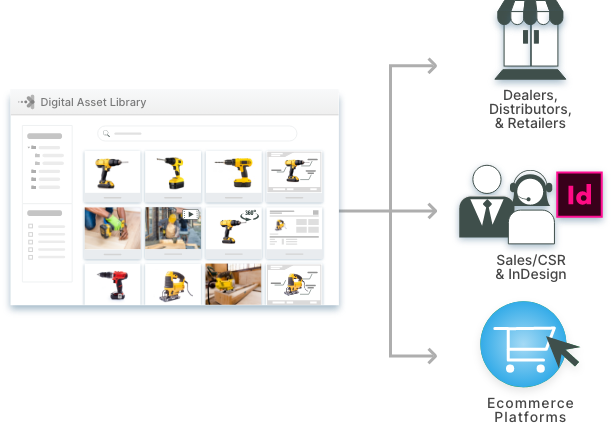
So far, it is clear as crystal that DAM systems positively impact various aspects of a brand’s marketing strategy. Let’s explore some benefits in detail:
Increased Brand Awareness and Loyalty
DAM helps maintain brand consistency by centralizing storage and management of all product content. It allows brands to share assets that meet organizational standards across different channels and touchpoints, increasing brand awareness. Also, the fact that a brand can deploy digital assets to a select group of users using self-service portals ensures that all product content partners can access information that bears the brand’s trademark. This consistent brand representation builds trust and fosters loyalty among product content partners, leading to stronger brand affinity and recognition.
Improved Customer Experience
The software enables brands to efficiently manage and distribute assets tailored to specific customer segments, channels, or marketing campaigns. This ensures that customers access the right assets at the right time. This personalized approach enhances the overall customer experience and drives higher engagement and conversions.
Enhanced Team Productivity and Efficiency
In addition to brand portals, most DAM tools offer another feature called Lightbox. Lightboxes enable curated collections of assets for specific projects or campaigns, which, when combined with brand portal capabilities, streamline workflows, minimize duplication of efforts, and promote efficient collaboration, saving time and effort for the entire organization.
Reduced Costs and Errors
They say time is money. So, you save a lot of money by reducing the time spent managing and distributing product content. Also, the highly automated nature of PIM and DAM systems reduces the need for human labor, which significantly cuts out the chances for errors. The fewer errors made, the more efficient the Digital Asset Management process, which saves expenses that would have been incurred when going back to rectify the mistakes.
What Does Digital Asset Management Tool Mean in Digital Marketing

Everything we have covered so far revolves around strategies built on digital technologies to increase a brand’s standing in the crowded space of online retail. But specifically, DAM in digital marketing encompasses the practices and technologies used to manage and optimize organization’s digital assets throughout their lifecycle, supporting various digital marketing goals and activities. For example, the software can be utilized in different digital marketing areas, including:
Content Marketing
The tool is instrumental in content marketing initiatives. It allows users to store, organize, and manage content assets such as blog articles, whitepapers, infographics, and videos. Importantly, it keeps all these assets at a central location where anyone with proper credentials can search, review, and retrieve them easily. Brands can leverage DAM systems to categorize content based on topics, target audience, or publication channels, ensuring content creators have quick access to approved assets, streamlining content creation, and accelerating campaign time-to-market.
Social Media Marketing
The platform also streamlines the storage and management of social media assets, including GIFs, videos, and images. An organization can use brand portals to enhance collaboration between social media managers and content creators, ensuring the right assets are used for each platform and campaign. Additionally, pre-built integrations with social media sites allow for scheduling and posting directly from the DAM system, simplifying the content publishing process and maintaining brand consistency across social channels.
Email Marketing
Similarly, most DAM tools can integrate with email clients to simplify content distribution. They also provide capabilities to create and share email templates and other product content used in email campaigns. Marketers can store pre-approved email designs, logos, product images, and other relevant assets within the DAM system, ensuring consistent branding across all email communications.
eCommerce Marketing
Ecommerce DAM solution is precious for eCommerce marketing, where numerous product images, descriptions, and other multimedia assets are required. Marketers can use the DAM system to organize product content, ensuring easy access for eCommerce managers and other users. Ultimately, the organization achieves consistent product representation, speeds up content production, and enhances the overall shopping experience for customers.
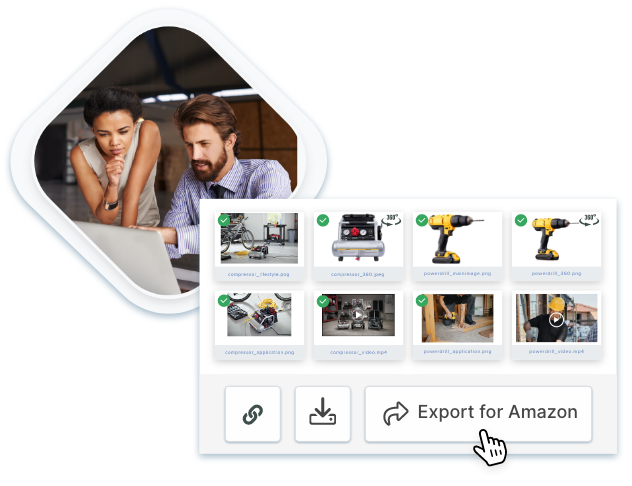
Conclusion - Choose the Top Digital Asset Management Tool
When all is said and done, DAM tools are essential for businesses that want to effectively manage their digital assets and share digital assets. They consolidate digital assets within a unified system, facilitating self-service access for teams regardless of time zone and geographical location. When someone asked “What is Digital Asset Management?”, simply define it in this way: DAM software ensures data security and compliance, optimize content performance and quality, and benefits brand awareness, loyalty, customer experience, team productivity, and efficiency while reducing costs and errors.
Catsy’s PIM and DAM platform offers a comprehensive set of features designed to elevate your brand awareness, loyalty, and customer experience. Don’t miss out on the opportunity to streamline your workflows and reduce costs with DAM and PIM System—book your demo now!
DAM, or Digital Asset Management, refers to the practices and tools used by organizations to effectively manage and share their digital content, including various types of digital assets, such as photos, videos, graphics, and documents.
DAM software typically works by allowing users to upload digital assets to remote storage, organizing them for easy access and retrieval, and providing a comprehensive set of tools and functionalities to manage digital assets efficiently.
DAM platform is important because it helps organizations manage the complexity and diversity of digital assets, maintain brand consistency, increase brand awareness and loyalty, adhere to data privacy regulations, protect intellectual property, and improve productivity in digital marketing workflows.
The key benefits of DAM include increased brand awareness and loyalty, maintaining brand consistency, centralizing storage and organization of digital assets, ensuring easy categorization and findability of assets, enhancing collaboration and efficiency within the organization, adhering to data privacy regulations, protecting intellectual property, and maintaining brand reputation.
In the context of digital marketing, DAM refers to the practices and technologies used to manage and optimize digital assets throughout their lifecycle. It encompasses the storage, organization, and retrieval of various content assets such as blog articles, whitepapers, infographics, and videos. DAM software can be utilized in different digital marketing areas, including content marketing, to streamline content creation, accelerate campaign time-to-market, and ensure quick access to approved assets.


